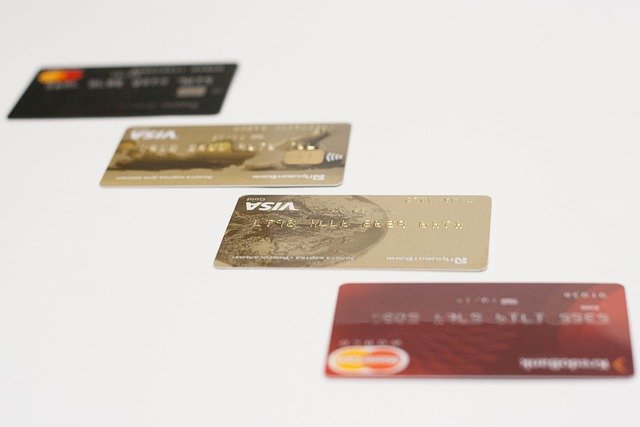“Credit Cards: Types, Benefits, and Things to Know Before Choosing”
“This comprehensive overview explains in detail how credit cards work, the main types available in the US, including rewards, cashback, and travel cards, along with key interest rates, annual and hidden fees, and the practical benefits of comparing multiple options before applying to ensure you choose the card that best fits your financial goals, spending habits, and lifestyle.”

How do credit cards work and what should you consider?
Credit cards are financial tools that allow users to borrow money from a financial institution up to a predetermined limit. When you make a purchase using a credit card, you’re essentially borrowing money from the card issuer, which you’ll need to repay later. The key aspects to consider when using a credit card include:
-
Credit limit: The maximum amount you can borrow on the card.
-
Interest rates: The cost of borrowing if you don’t pay your balance in full each month.
-
Grace period: The time between your purchase and when interest begins to accrue.
-
Fees: Annual fees, balance transfer fees, and foreign transaction fees, among others.
-
Repayment terms: The minimum amount you need to pay each month and the consequences of late payments.
Understanding these fundamental aspects is crucial for responsible credit card use and avoiding potential financial pitfalls.
What are the different types of credit cards available?
Credit cards come in various types, each designed to cater to different financial needs and spending habits. Some common types include:
-
Rewards credit cards: These cards offer points, miles, or cash back on purchases.
-
Balance transfer cards: Designed to help users consolidate debt with low or 0% introductory APR periods.
-
Secured credit cards: Require a cash deposit and are often used to build or rebuild credit.
-
Student credit cards: Tailored for college students, often with lower credit requirements.
-
Business credit cards: Specifically for business expenses, offering perks relevant to company spending.
-
Travel credit cards: Provide travel-specific rewards and benefits like airport lounge access or travel insurance.
-
Low-interest credit cards: Offer lower APRs for those who may carry a balance.
Each type of credit card has its own set of features, benefits, and potential drawbacks, making it essential to choose one that aligns with your financial goals and spending patterns.
How can you compare credit card offers, fees, and rewards?
When comparing credit card offers, it’s important to look beyond flashy marketing and focus on the details that will impact your finances. Here are key factors to compare:
-
Annual Percentage Rate (APR): This is the interest rate you’ll pay if you carry a balance. Compare both the introductory and standard APRs.
-
Annual fees: Some cards charge yearly fees for their services. Weigh these against the potential benefits.
-
Rewards programs: Look at earn rates, redemption options, and any limitations or expiration dates on rewards.
-
Sign-up bonuses: Many cards offer introductory bonuses, but make sure you can meet the spending requirements without overextending yourself.
-
Additional perks: Consider features like travel insurance, purchase protection, or extended warranties.
-
Foreign transaction fees: Important for those who travel or make international purchases frequently.
To make an informed decision, create a spreadsheet or use online comparison tools to evaluate these factors side by side for different card options.
What practical tips can help you choose the right credit card?
Selecting the ideal credit card requires careful consideration of your financial situation and spending habits. Here are some practical tips to guide your decision:
-
Assess your credit score: Your credit score will determine which cards you’re likely to qualify for and the terms you’ll receive.
-
Analyze your spending patterns: Choose a card that rewards your most frequent types of purchases.
-
Consider your financial goals: Whether you’re looking to build credit, earn rewards, or manage debt, there’s a card designed for your needs.
-
Read the fine print: Understand all fees, interest rates, and terms before applying.
-
Look at your income and budget: Ensure you can manage the payments and potential annual fees associated with the card.
-
Consider your lifestyle: If you travel frequently, a travel rewards card might be beneficial. If you prefer simplicity, a cash-back card could be a better fit.
-
Compare multiple offers: Don’t settle for the first offer you receive. Shop around to find the best terms and benefits.
By following these tips, you can narrow down your options and choose a credit card that complements your financial strategy.
How do credit card fees and rewards compare across providers?
When evaluating credit cards, it’s crucial to understand how fees and rewards can vary across different providers. Here’s a comparison of some popular credit card options:
| Card Type | Provider | Annual Fee | Rewards Rate | Sign-up Bonus | Intro APR |
|---|---|---|---|---|---|
| Cash Back | Provider A | $0 | 1.5% on all purchases | $200 after $500 spend in 3 months | 0% for 15 months |
| Travel Rewards | Provider B | $95 | 2x points on travel and dining | 50,000 points after $4,000 spend in 3 months | N/A |
| Balance Transfer | Provider C | $0 | N/A | N/A | 0% for 18 months on balance transfers |
| Secured | Provider D | $0 | 1% on all purchases | N/A | N/A |
Prices, rates, or cost estimates mentioned in this article are based on the latest available information but may change over time. Independent research is advised before making financial decisions.
This table provides a snapshot of different card types and their features. When comparing cards, remember that the best option depends on your individual needs and financial situation. A card with high rewards might seem attractive, but if it comes with a hefty annual fee, it may not be worth it unless you spend enough to offset the cost.
In conclusion, choosing the right credit card requires careful consideration of your financial needs, spending habits, and long-term goals. By understanding the types of credit cards available, comparing offers diligently, and following practical tips for selection, you can find a card that not only meets your immediate needs but also supports your financial well-being in the long run. Remember to use credit responsibly and always read the terms and conditions before applying for any credit card.




